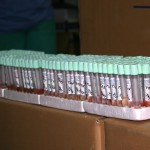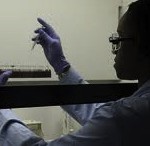Lab, Interrupted

By Danielle Ofri
New York Times op-edÂ
BEDPAN ALLEY is the affectionate name given to a stretch of First Avenue in Manhattan that is packed with more hospitals than many cities possess. This stretch also happened to be right in the flood zone during Hurricane Sandy. Water damage and power failures closed down all three of the New York University teaching hospitals — Bellevue Hospital, Tisch Hospital and the Manhattan V.A. Two months later, they are still not admitting patients, though two are on schedule to begin doing so shortly.
The harrowing evacuation of hundreds of patients made headlines nationwide. The disruption of regular medical care for tens of thousands of outpatients was a clinical nightmare that is finally easing. And the education of hundreds of medical students and residents is being patched back together.

All academic medical centers, however, rest on a tripod — patient care, education andresearch.The effect of the hurricane on the third leg of that tripod — research — has gotten the least attention, partly because rescuing cell cultures just isn’t as dramatic as carrying an I.C.U. patient on a ventilator down flights of stairs in the dark.

But, of course, there is an incontrovertible link between those cell cultures and that patient. For every medication that a patient takes, someone researched the basic chemistry of the drug, someone designed the clinical trial to test its efficacy, and of course a volunteer stepped forward to be the first to take the pill. Scientific research has engineered the impressive advancements of medical treatment, and every patient is a beneficiary.
When the hospitals were hit by Hurricane Sandy, hundreds of experiments were obliterated by the loss of power. Precious biological samples carefully frozen over years were destroyed. Temperature-sensitive reagents and equipment were ruined. Medications and records for patients in clinical trials were rendered inaccessible. And sadly, many laboratory mice and rats perished (though 600 cages of animals were rescued during the night by staff members who used crowbars on inaccessible doors and carried the cages out through holes cut in the ceiling).
On a slushy, rainy day earlier this month, I sat in on a meeting of N.Y.U.’s research community. Hundreds of scientists packed the chilly lecture hall to discuss what the future might hold. It was clear that the damage to laboratories and samples would not be amenable to easy repair. Some 400 researchers were being relocated to a patchwork of temporary sites so that they could restart their work.
But scientists can’t just walk in to a new space with a lab coat and a notebook; they need centrifuges, deep-freezes, lab animals, electron microscopes, incubators, autoclaves, gamma counters, PET scanners. They come with graduate students, lab techs, post-docs and collaborating investigators. For clinical researchers, there are also the patients enrolled in their clinical trials, with their medications and voluminous records.
Even beyond their eagerness to get back to work, researchers felt a sense of loss, not just in time, money, momentum, samples and grants, but of a part of their lives. Some senior scientists lost decades of archived samples. Others lost irreplaceable mice with genetic mutations for studying how coronary plaques resolve, the role of inflammation in lymphoma and the development of neural networks. At the other end of the spectrum were post-docs whose nascent careers were suddenly up in the air. Some were in tears.
Walking down First Avenue after the meeting, I passed a young researcher pushing a cart laden with cages, transporting lab rats to their new home. There was a blanket over the cages to protect them from the rain, but it kept slipping. She slogged up the wet avenue, one hand pushing the cart, the other struggling to keep the cover over her charges.
The logistical efforts to relocate and reignite such a vast research enterprise are staggeringly complicated. But the administration has cataloged each person’s research needs to match them with available space elsewhere, and hundreds of researchers have successfully rekindled their investigations despite the prodigious challenges.
Bellevue and Tisch are returning to their clinical operations and will be able to admit patients shortly. But even after the hospital wards and clinics are bustling at full capacity, the ribbon won’t feel ready to snip until the researchers are restored to their homes as well. For many patients, the thrum of research within a medical center is invisible. But it is an integral — and very human — part of a hospital. When a hurricane disrupts research, it is a loss that resonates well beyond the laboratories.
